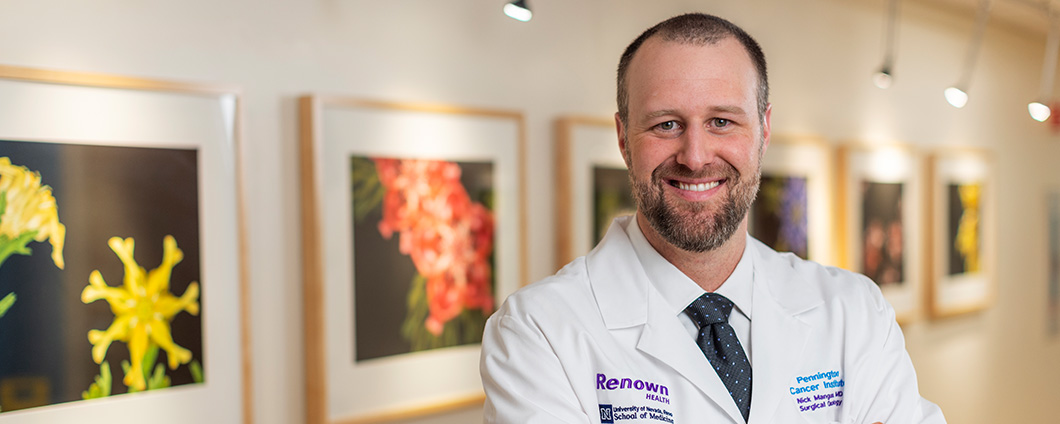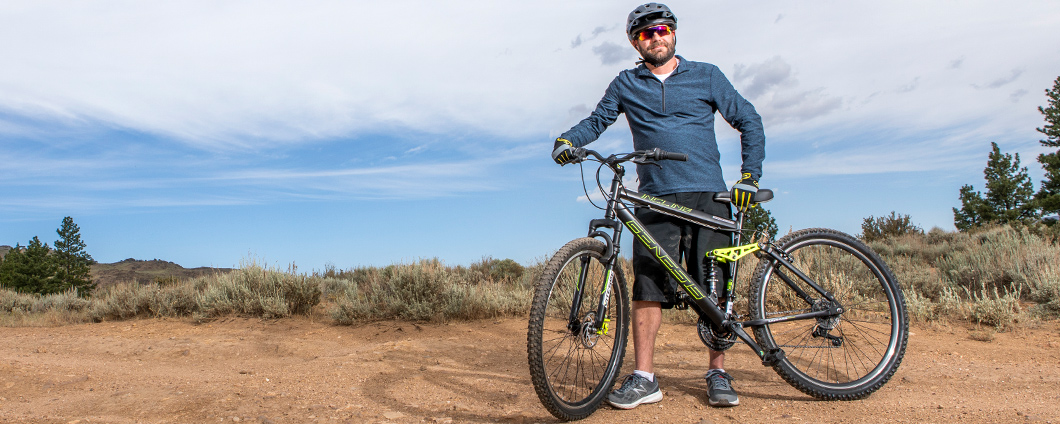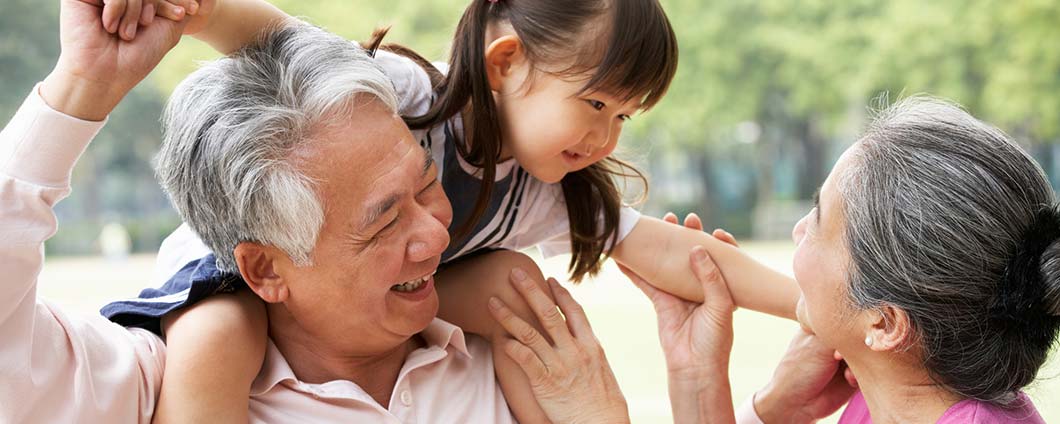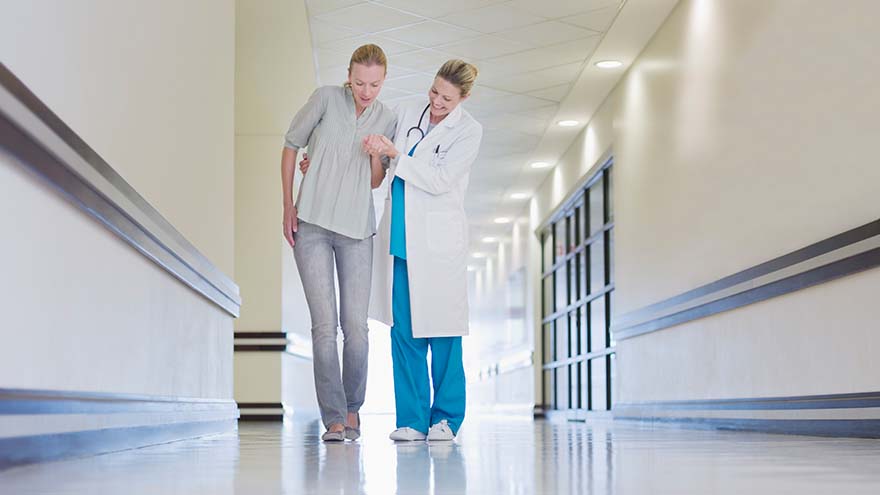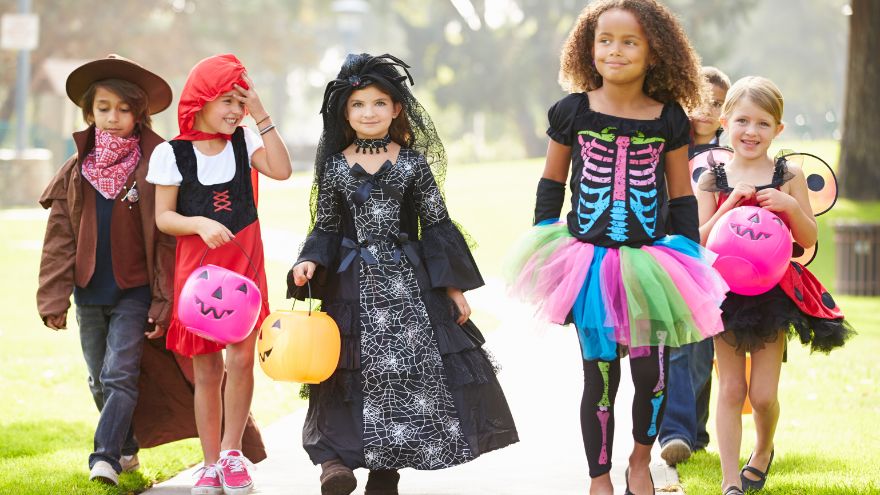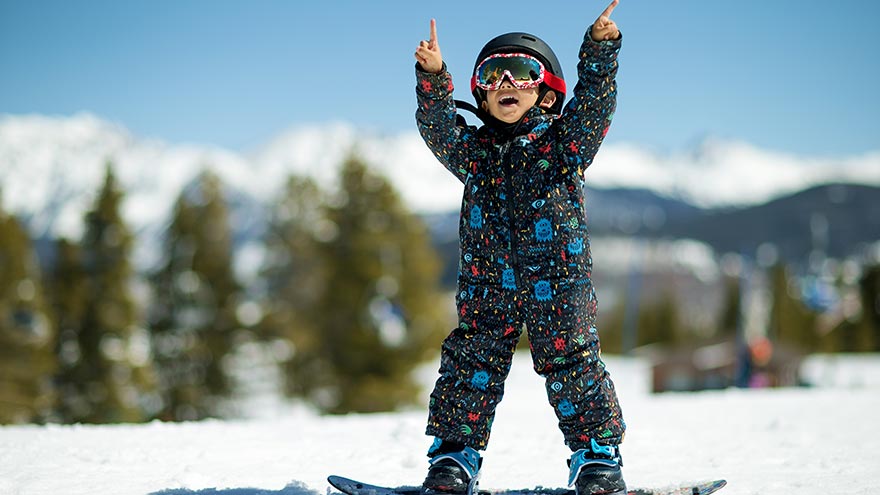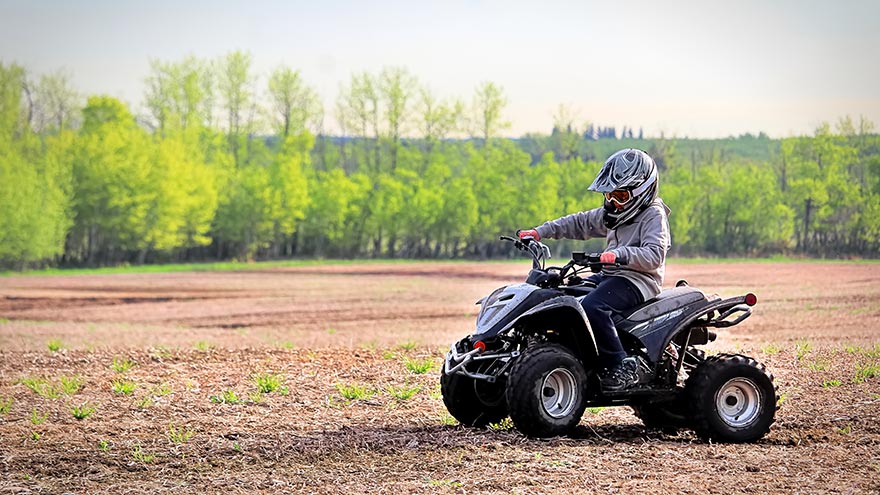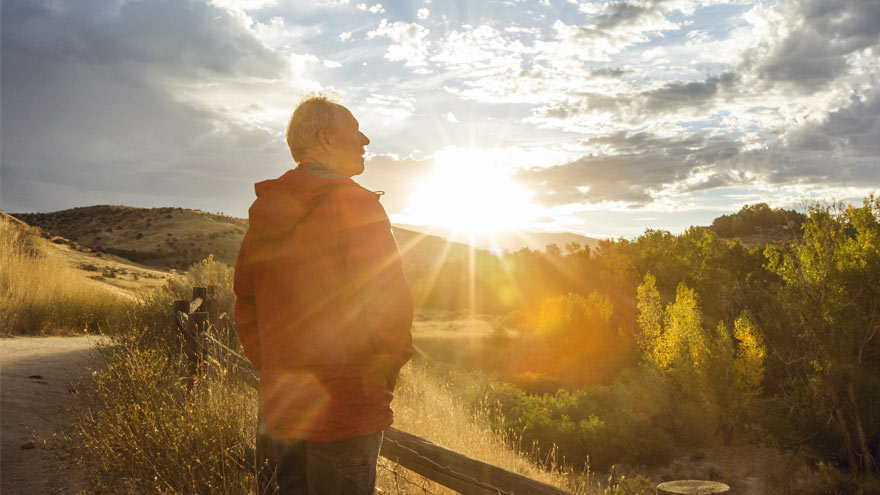Search
Results for 'clinic'
Clear-
Surgical Oncology
At Renown's William N. Pennington Cancer Institute, we offer a comprehensive range of surgical oncology services aimed at diagnosing, treating, and managing various types of cancer. Our experienced surgical oncologists specialize in a variety of procedures, including minimally invasive surgeries, robotic-assisted surgeries, and complex tumor resections. We utilize the latest surgical techniques and technologies to ensure precise, effective, and safe treatment outcomes for our patients. Our surgical oncology team collaborates closely with other specialists, including medical oncologists, radiation oncologists, pathologists, and radiologists, to develop individualized treatment plans tailored to each patient's specific needs and preferences. We believe in a multidisciplinary care approach that emphasizes teamwork, communication, and coordination to provide comprehensive care and support throughout the entire cancer journey. Surgical Procedures Can Include: Tumor resection Lumpectomy Mastectomy Lymph node dissection Prostatectomy Hysterectomy Nephrectomy Colectomy Gastrectomy Whipple procedure
-
Neurodiagnostics
The Neurodiagnostics team at Renown Health offers a wide range of comprehensive imaging, electrical impulse detection, and other neurodiagnostic procedures to help doctors quickly and accurately diagnose neurological conditions, allowing them to create an effective treatment plan. Using neurodiagnostics, our neurologists can diagnose a variety of dysfunctions in the nervous system, such as: Autonomic disorders Brain tumors Epilepsy Head trauma Movement disorders, such as Parkinson’s disease Multiple sclerosis Neuromuscular diseases Peripheral nerve injuries Sleep and breathing disorders Spinal cord injuries Stroke Vascular disease
-
Spine, Sports and Pain Management
How We Can Help You may benefit from treatment for neuromuscular (nerve, muscle and bone) disorders – that cause pain and impair normal functions. But, first, consult your primary care physician for a referral to Renown Health's Spine, Sport & Pain Management. Dr. Keating, Medical Director and his colleagues, Dr. Su and Dr. Storm, will customize a treatment plan that best suits your needs and lifestyle while providing the most effective care possible. For more information: Call 775-982-3608 | Fax 775-982-8001
-
Memory Disorders Program
Memory Disorders Program The Renown Memory Disorders Program is dedicated to accurately diagnosing and treating many different cause of memory loss and cognitive decline.
-
When Is It Time to See a Physiatrist
Physiatry (fi-zahy-uh-tree), also referred to as physical medicine and rehabilitation, encompasses the diagnosis, prevention and treatment of disabilities or injuries related to the brain, nerves, bones and muscles. The goal of this specialty is to maximize physical functioning, greatly decrease or eliminate pain, foster independence and improve quality of life for those suffering with a disability, chronic pain and physical impairments. Who Is It for? Physiatry can help patients with functional deficits and secondary medical conditions as a result of the following: Amputation Brain Injury Osteoarthritis Spasticity and Movement Disorders Spinal Cord Injury Spine Pain Sports-Related Injuries Stroke Some of these medical conditions can often cause chronic pain or impede physical functioning, ultimately affecting a person’s overall well-being and making it difficult for them to sustain a desired quality of life.
-
Acute Care Therapy
The Acute Care Rehab Therapists at Renown Regional and South Meadows serve a wide variety of patients and their families with varying acuity levels and diagnoses. The 2 departments (inpatient and outpatient) are made up of around 80 employees, including 14 therapists with over 20+ years of experience and over 700 years of combined experience. What is Acute Care Therapy? The acute care setting is a very fast paced environment with a high volume of therapy orders and fluctuating census. The therapists are considered a consult service with a primary goal of helping with discharge planning and moving patients throughout our system. Depending on location, the therapists generally cover 1-3 floors within the hospital and manage a daily caseload of about 15-20 patients. Our general population ranges from Neonates to Geriatrics. The therapists provide comprehensive diagnostic and therapeutic rehabilitative services (Physical Therapy, Occupational Therapy, and Speech Language Pathology for the treatment of patients with various disorders and related medical conditions. Treatment may include a variety of activities and exercises to maximize a patient’s functional independence. Renown Outpatient Rehab Therapy Services Outpatient Physical, Occupational, and Speech Therapy services to help individuals improve & regain function to allow for higher quality of life and a more active lifestyle. We provide treatment for: Orthopedic Conditions Nerve Injuries Spinal Cord Injuries Sport-Related Injuries Worker’s Compensation Injuries Trauma and Post-Surgical Recovery Vestibular Dysfunction Hand Injuries Speech/Language Difficulties Swallowing Dysfunctions Cognitive Issues Specialty Services Include: Lymphedema Therapy Dry Needling Chronic Pain LSVT Big and LSVT Loud Modified Barium Swallow Studies (MBSS) South Meadows Campus Lite Gait & Solo Step Systems Pre-Driving Assessments and Computer Driving Simulation Wheelchair Evaluations-Basic and Complex Custom Splinting All treatments are one-on-one with a licensed Outpatient Therapist
-
Keeping Kids Safe on Halloween
Halloween is around the corner. So while you're prepping pumpkins for carving, putting together creative costumes and coordinating trick-or-treating plans, safety is one more detail to remember. Masks, haunted houses, witches, ghosts and ghouls — it all spells Halloween, and what could be more frighteningly fun, right? For children, however, Halloween can indeed be frightening and not so fun. According to Dr. Kristina Deeter, Physician-in-Chief of Renown Children’s Hospital and Chair of Pediatrics for the University of Nevada, Reno School of Medicine, it is common for younger children to express Halloween fears — being afraid of monsters, the dark or really anything out of the norm. “It's normal for children to struggle with separating reality from fantasy,” she explains. For children who fall into this category, the month of October can be traumatizing. Halloween may not come until the end of the month. Still, in the weeks building up to the spookiest night of the year, little ones are bombarded on all sides with decorations — mummies, skeletons, coffins, vampires, you name it. For a child with a blossoming imagination who, as Dr. Deeter said, is still learning to differentiate real from pretend, this can cause additional fears and anxieties. In commemoration of Halloween Safety Month, Dr. Deeter shares safety tips for the spooky holiday from the American Academy of Pediatrics: Dressing Up & Heading Out Plan costumes that are bright and reflective. Ensure shoes fit well and that costumes are short enough to prevent tripping, tangling or coming into contact with flames. Consider adding reflective tape or striping to costumes and trick-or-treat bags and baskets for greater visibility. Masks can limit or block eyesight. Instead, consider non-toxic makeup and hats, which should fit properly to prevent them from sliding over the eyes. Test makeup ahead of time on a small patch of skin to test for allergies before full application. When shopping for costumes, wigs and accessories, look for and purchase those with a label clearly indicating they are flame resistant. If a sword, cane or stick is a part of your child's costume, make sure it is not sharp or long. A child may be easily hurt by these accessories if he stumbles or trips. Do not use decorative contact lenses without an eye examination and a prescription from an eye care professional. While the packaging on decorative lenses will often make claims such as "one size fits all," or "no need to see an eye specialist," obtaining decorative contact lenses without a prescription is both dangerous and illegal. This can cause pain, inflammation, serious eye disorders and infections, which may lead to permanent vision loss. Review with children how to call 9-1-1 (or their local emergency number) if they ever have an emergency or become lost. Carving Pumpkins Leave the carving to the grownups. Have children draw the pumpkin design with markers, but keep knives away. Consider using a flashlight or glow stick instead of a candle to light your pumpkin. If you do use a candle, a votive candle is safest. Candlelit pumpkins should be placed on a sturdy table, away from curtains and other flammable objects, and not on a porch or any path where visitors may pass close by. They should never be left unattended. Prepping Your Home Keep your entryway safe for trick-or-treaters by removing all items from the porch or front yard that a child could trip over, like garden hoses, toys, bikes and lawn decorations. To ensure visibility, check outdoor lights and replace burned-out bulbs. Sweep leaves (or snow) from sidewalks and steps. If there are dogs in the home, take steps to ensure they don't jump on trick-or-treaters. Hunting for Treats Young children should always be accompanied by a parent or responsible adult. Give each child and adult a flashlight (with fresh batteries). If older children are heading out to trick-or-treat alone, plan and review a route you can agree on, as well as a specific time they are supposed to return home. Only visit homes with a lit porch light. Never enter a home or a car for a treat. Notify law enforcement authorities of any suspicious or unlawful activity immediately. Since pedestrian injuries are the most common injuries to children on Halloween, remind youngsters to take crosswalk safety precautions. For more key tips regarding Halloween safety for your young trick-or-treaters, visit our partners at Safe Kids Worldwide for a variety of spooky safety resources.
-
Know Before You Go
Grab your skis, goggles, coat – and don’t forget that helmet. Skiing and snowboarding are fun activities for all ages but come with the risk of injury. Read on for tips to make it a safe day on the mountain. Daydreaming about your next trip to the slopes? We talked to Jared Worchel, DO, about his top tips for gearing up. Get the Gear Before you head out to ski or snowboard, make sure you have all your gear ready and in good condition. Everything should fit correctly so that it keeps you as safe as possible. Wearing proper gear will also help keep you warm. Items to check on before you head out include: Boots Bindings Goggles Poles Helmet Outwear Gloves Pack water and snacks in case the drive takes longer than you except due to weather or traffic. You’ll also want to make sure that your cell phone is fully charged before you head out in case you need to contact friends of staff for help while on the mountain. Helmet, Helmet, Helmet Having a helmet that fits correctly is the most important thing you can do to prepare for a safe day on the mountain. According to a National Ski Areas Association study, helmet use has increased over the last 15 years, with 80 percent of skiers and snowboarders using helmets. Schubert would like to see that number increase to 100 percent. “If you have a head injury it could take you out for the rest of your life,” Dr. Worchel said. “The most important things to think about when fitting a helmet are making sure that it really fits you appropriately. You want to go into a store and try on as many different helmets as they have available. I know it’s tempting to buy one online, but you’re never going to know if it fits correctly.” If you are in an accident, your helmet’s fit can help protect you. Dr. Worchel has some tips on fitting: A helmet should fit low and snug over the head. Make sure that the helmet doesn’t wiggle or feel loose. Look for a model that has adjustability in the back, which will help you make sure it fits snugly. F ind a helmet with a chin strap that will help it stay in place throughout the day.
-
Tips for Keeping Your Kids Safe on ATVs
In the state of Nevada, all-terrain vehicles (ATVs) are one of the pediatric population's top three mechanisms of injury. Kids under 16 are the leading victims of ATV incidents and fatalities because they cannot reach controls, cannot activate controls and they have a restricted field of vision. Tips to Safely Utilize ATVs ATVs are off-road vehicles used for activities such as off-roading and farm work. In the state of Nevada, it is legal for teens to ride them, even without a driver's license. However, even though it is legal for teens to ride these vehicles, it is not always safe. Here are a couple of tips and tricks to stay safe while using ATVs: Be at least 16 years old. Health and safety experts strongly discourage ATV use by anyone younger than 16. Operating an ATV demands that drivers be skilled at making quick adjustments, such as speeding up, slowing down and shifting their weight to help turn the vehicle. People under 16 are less likely to have the physical strength and decision-making experience necessary to drive an ATV safely. Get safety certified. Before you ride an ATV on a trail, learn how to do it safely in a controlled setting. Visit the ATV Safety Institute's website for course information. Ride an ATV that's right for your size and age. Full-size ATVs can weigh more than 600 pounds and be very difficult to handle. Select an ATV designed for you or your child's age group. This sizing can be found on the manufacturer's warning label right on the vehicle. Always wear an approved helmet and eye protection. The best helmets for ATV use have a full-face shield and meet Department of Transportation safety standards. Many helmets have flip-down visors for eye protection. If yours doesn't, be sure to wear shatterproof goggles and not just sunglasses. Wear long pants, long sleeves, gloves and over-the-ankle boots. ATVs have a high center of gravity and no safety cages, roll bars or seatbelts. If they tip, you can fall off. Protective clothing will help prevent scrapes and cuts if you get thrown from an ATV. Always ride at a safe speed on a trail meant for ATV use. When ATVs get going fast, they become less stable and more likely to tip. ATV tires are not meant for pavement or high speeds. Both factors can make turning an ATV difficult and dangerous.
-
Keeping Your Brain Healthy, No Matter Your Age
It’s true there is no cure for dementia, yet studies suggest your life choices today can reduce brain decline in the future. How important is diet to brain health? Food is the foundation of your body. Fats, carbs and protein provide the energy for your cells and metabolism. So the quality and amount of food you eat directly affects your brain. Specifically, researchers are paying special attention to the link a high sugar diet and/ or an unhealthy fat diet may have on your brain. Your brain on sugar According to the Alzheimer’s Association, when too much sugar is in the bloodstream for long periods of time, it can damage the brain cells. Many people with diabetes may develop brain abnormalities, and these changes may increase chances of dementia — research is still being done to understand this connection. Many U.S. adults have prediabetes with blood sugar higher than normal. Insulin resistance often leads to diabetes. Insulin resistance has been linked to metabolic syndrome, which is a precursor for cardiovascular and cerebrovascular disease (heart attack, stroke). Some signs of metabolic syndrome include: Large waist size (40 inches or more for men, 35 inches and up for women) Low HDL (good) cholesterol level Higher than normal blood pressure — 130/85 and above Current research suggests too much sugar in the blood causes inflammation, which can damage brain cells. High carbohydrate foods, such as sweetened beverages, chips, white rice, white potatoes, bagels, cereals and desserts, have been shown to raise blood sugar. Although anyone can get diabetes, Hispanic Americans and African Americans are at greater risk.
Read More About Keeping Your Brain Healthy, No Matter Your Age
-
-
4Nov
Renown Institute for Cancer offers one-hour weekly classes to newly diagnosed breast cancer patients and their families. These insightful classes are facilitated by oncology nurse navigators, social workers, and surgical nurses. In this class, you will: • Meet your navigator and learn about cancer support services available to you • Hear about pre-surgery instructions and your pre-admit appointment • Receive education in rehabilitation and lymphedema • Have your questions answered about treatment, including chemotherapy, biotherapy, immunotherapy, radiation therapy and clinical trials Note: 18y+ only. This class is not suitable for minors. Childcare is not provided. Video-enabled attendance is available. Patients can access remotely and join from any video-enabled device (smartphone, iPad, laptop or webcam/desktop). Upon registering, you will receive instructions on how to connect virtually.
Read More About Breast Cancer Treatment Orientation Class
-
-
-
28Oct
Renown Institute for Cancer offers one-hour weekly classes to newly diagnosed breast cancer patients and their families. These insightful classes are facilitated by oncology nurse navigators, social workers, and surgical nurses. In this class, you will: • Meet your navigator and learn about cancer support services available to you • Hear about pre-surgery instructions and your pre-admit appointment • Receive education in rehabilitation and lymphedema • Have your questions answered about treatment, including chemotherapy, biotherapy, immunotherapy, radiation therapy and clinical trials Note: 18y+ only. This class is not suitable for minors. Childcare is not provided. Video-enabled attendance is available. Patients can access remotely and join from any video-enabled device (smartphone, iPad, laptop or webcam/desktop). Upon registering, you will receive instructions on how to connect virtually.
Read More About Breast Cancer Treatment Orientation Class
-
